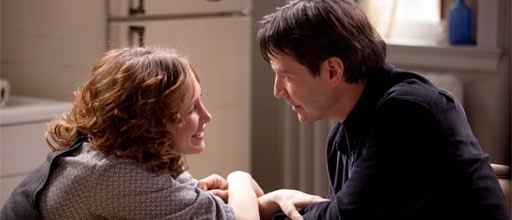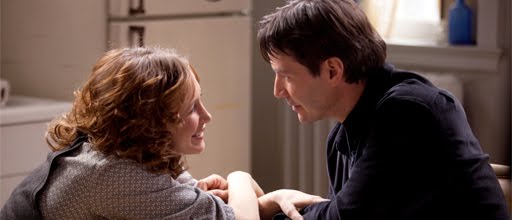Writer/director Malcolm Venville is making a career for himself – in the slightest way possible. His first feature, 44 Inch Chest, featured most of the great working Bristish thespians (Ray Winstone, Ian McShane, Tom Wilkinson, Stephen Dillane, John Hurt) and gave them little more to do than counsel a besmirched friend (Winstone) on how to properly take vengeance on his wife’s lover. The group runs with the minimalism, and the end result is something close to enjoyable, but more curious than anything else. Why did Venville do so little with so much?
The same can be said of his second feature, Henry’s Crime, which features Keanu Reeves, Vera Farmiga, James Caan, Judy Greer and Peter Stormare. These are A-list players in a romantic comedy-heist caper hybrid that adheres to the cliches of all of its components, courtesy of screenwriters Sacha Gervasi (director of the crowd-pleaser Anvil!: The Story of Anvil) and David N. White (currently writing the Red Sonja remake).
Reeves plays Henry, a toll booth operator sleepwalking through life, complete with a disillusioned wife (Greer) and a house in the center of a disillusioned city (Buffalo). Minutes into the film, he’s unwittingly roped into a bank robbery and the sole party arrested for the crime. He’s sentenced to prison for 3 years.
Nobody does blankness better than Reeves, so the opening works on a curious level, begging the question: why doesn’t Henry rat on the non-friends who hustled him? The eventual answer is no more informative than you’d expect in a “Venville film.” In prison, Henry meets Max (James Caan), a criminal institutionalized by the system. From his introduction on, Caan steals every scene he’s in. The two develop a bond built on Max’s sharp one-liners and Henry’s mumbled responses. One day in jail, a fellow jail mate suggests Henry actually commit the crime he did the time for, once he gets out. Our hero’s brow wrinkles at the thought.
Henry gets out, returns to the scene of the crime and is literally driven to stealing it. He’s hit by a woman in a car (Farmiga), which forces him to clean up in a nearby cafe, which forces him into the bathroom, in which hangs an old newspaper article detailing an underground tunnel leading from the local theater to the bank who didn’t rob. But now will. Farmiga’s character, of course, is the lead actress of a play being rehearsed at the very theater with the tunnel beneath it.
Sure, it’s quirky happenstance and easy plotting, but Reeves goes about it aloof and Farmiga eats up the scenery with her big hair and it all works well enough, much in the same way 44 Inch Chest does. Just well enough. Venville and his cinematographer Paul Cameron frame the film much in the same vein, giving the actors enough room to breath with wides and mediums for the most part. A few more close-ups may have helped the tonally-confusing emotions that come out in the third act, but, alas, the camera remains mostly objective.
Venville’s true talent seems to be knowing his actors’ strengths. Farmiga is good at tough and smart, Reeves at nice and hopeful and Caan at sharp and sarcastic. Venville utilizes all of this, making the experience far more enjoyable than the script (which, to be fair, has some very nice stretches of comedic dialogue) should allow.
This is a romance, after all, and even passable romances are hard to come by these days. Unfortunately, it’s also a sum that doesn’t quite equal its parts. Venville needs to learn how to add.
Do you like Reeves as a leading man? How about Venville as a director?


